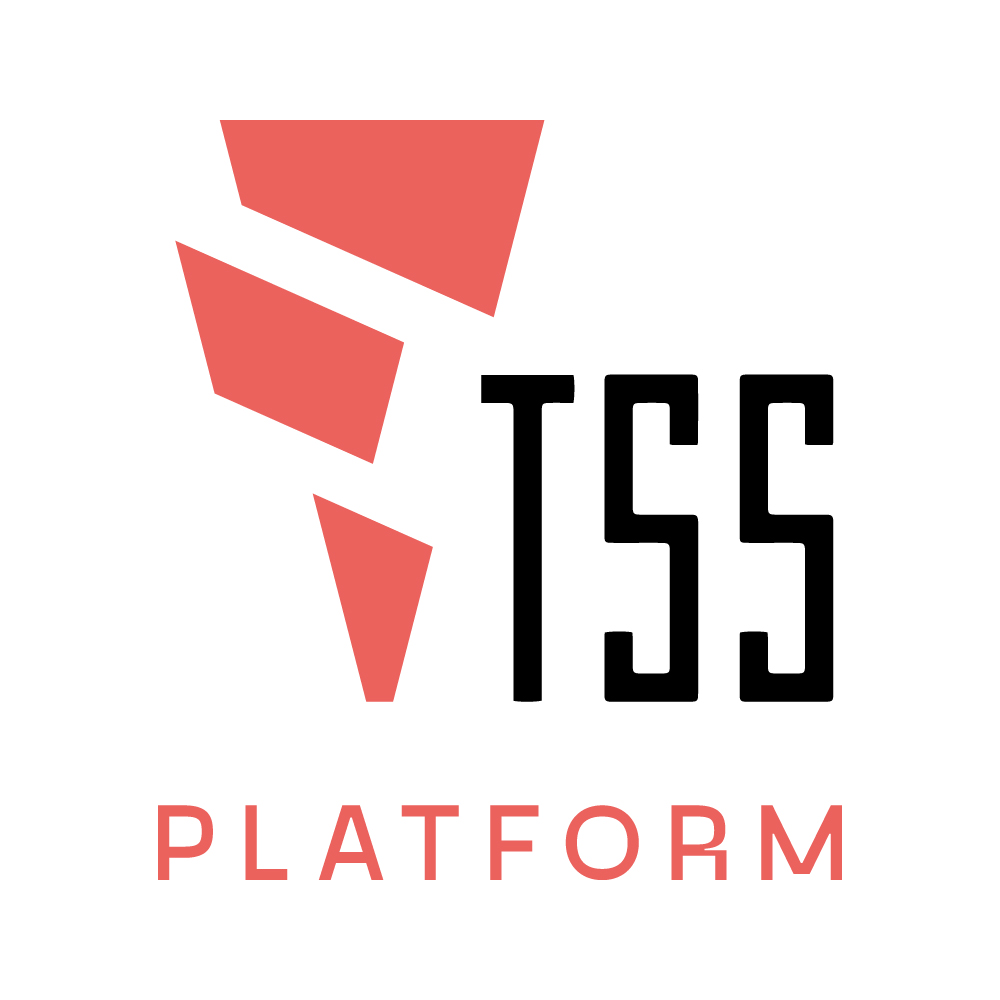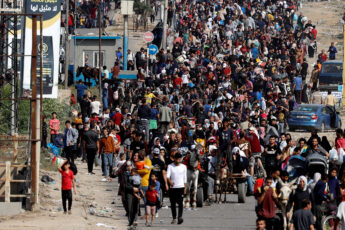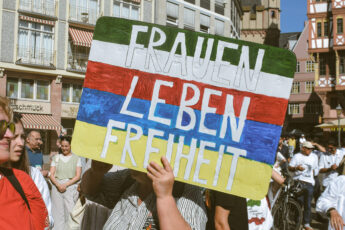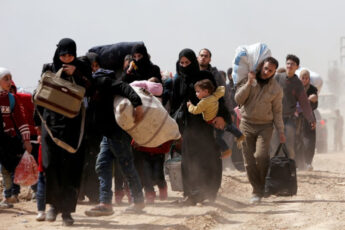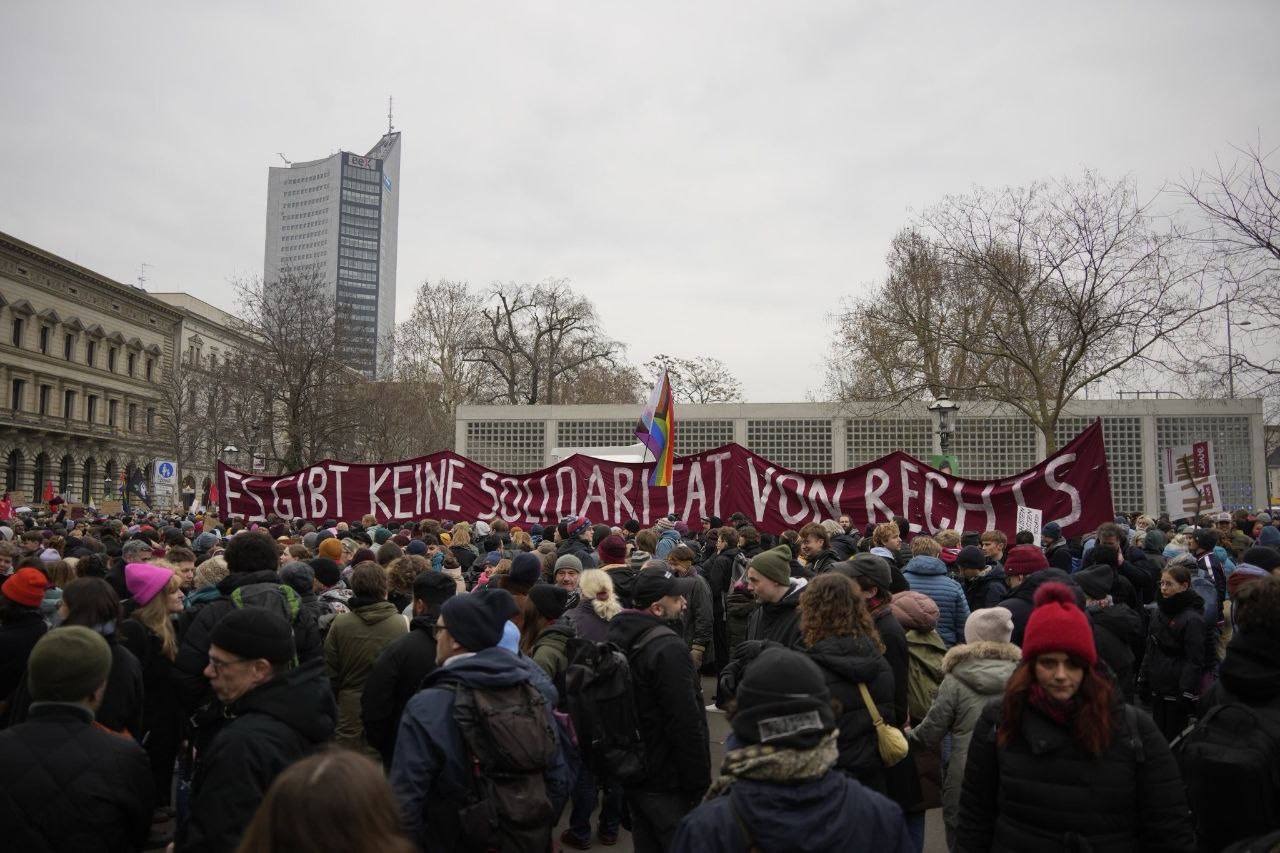
This article was written by the We’ll Come United coordination group, the Anti-Racism Working Group of interventionistiche Linke – Leipzig, and the TMC. In the weeks before the German federal elections (23rd of February) many people took to the streets to protest the rise of the far-right and the possibility of an alliance between the AfD (Alternative für Deutschland) and the centrist-liberal parties. As all the major parties in Germany are moving more and more to the right, the racist attacks on migrants’ freedom and living conditions are really what they seem to have most in common. As the article shows, racist policies and tightening of migration laws are not only part of the political agenda of center-right or far-right parties, but have been common currency also with the allegedly “progressive” government. The huge demonstrations that invaded the streets are an important signal against the leaning of politics to the right. But they will fail to radically change the political trajectory if they don’t address the systemic institutional racism and if they don’t put migrants’ struggles at the forefront. At the same time, Germany is not an isolated case, since racist, patriarchal, and neoliberal policies are becoming the dreadful reality everywhere under this world war scenario. Therefore, a transnational response is more urgent than ever. For this reason, we publish this contribution as a crucial one for the public discussion we will have on March 1, 2025 on the growth of the far-right and the challenges of migrants’ struggles.
***
The recent mass demonstrations in Germany have shown the impressive power and mobilization potential of movements when it comes to sending a signal against racist and fascist politics. In Berlin and Munich alone, up to 350 000 people took to the streets and gathered in front of the party headquarters of the conservative Christian party CDU/ CSU. These protests reflect widespread public resistance to far-right authoritarian ideologies. The immediate cause of the protests were two racist motions tabled by the CDU/CSU bloc in parliament and a draft for the so-called “influx limitation law” (Zustromsbegrenzungsgesetz) – a euphemism for the drastic tightening of migration policy. These could only have been enforced with the support of the far-right AfD party, something that – unlike at the municipal level – has never happened at the federal level.
The legislation eventually was rejected by 349 to 338 votes. Its aim was to drastically restrict the rights of migrants and refugees. Among other things, it envisaged enshrining migration limitations in the Residence Act. Family reunification for those in need of subsidiary protection was to be cancelled. Subsidiary protection was suspended between 2016 and 2018. Since 2018, 1000 relatives of beneficiaries of subsidiary protection have been allowed to come to Germany every month for humanitarian reasons. Moreover, the law gave more power to the police so that they could arbitrarily apply for the detention or custody of persons obliged to leave the country, and for those who could not leave the country, detention would expand indefinitely. The legislative proposals within the European borders, or in the “core” of Europe as in the case of Germany, are deeply connected with what happens beyond and along the borders and tie in with a broader trend of increasing repression against migrants. This was manifested not least by the new European Pact on Migration and Asylum, which was approved last year. We see that while the EU sets the rules for Member states for stricter asylum laws, at the same time, it further externalizes border control and screening mechanisms and allows the use of new technologies developed within the military-industrial-academic complex. Moreover, with the expansion of the Schengen area to Romania and Bulgaria, Frontex’s reach has expanded eastward, meaning that we can expect more pushbacks and human rights violations along the new borders. The right to asylum is slowly dying and resistance to this course is therefore essential.
We know that the increase in violence and control along the borders will not prevent migrants from moving in search of better living conditions. As much as governments and capital are trying to blackmail and chain migrants’ freedom to their economic, political, and military needs, migrants will keep on challenging them with their movements.
Nevertheless, the question arises as to whether the current momentum of the mass demonstrations can actually strengthen migrants’ and anti-racist struggles.
The failure of the CDU/CSU’s draft bill is also due to the collective strength of the many people who took to the streets in the past weeks against the rise of the right. However, we can question whether these mobilisations are actually in support of migrants and their freedom to move.
As necessary and encouraging as these current protests are, it remains essential to reflect critically on their political character and anti-racist orientation. It is not enough to oppose the most extreme forms of right-wing politics if anti-immigration measures are simultaneously supported. Racism is not a marginal phenomenon but is inherent in state institutions, legislation, and social structures.
With the demonstrations against the CDU’s actions, people and organizations from a wide range of political orientations took to the streets together in Germany. Some demonstrations were characterized by strong participation from local left-wing and anti-racist organizations. Others aimed to mobilize a crowd as large as possible and opened to liberal parties. The dominant force of the demonstrations with the most media coverage was often only depicted as a broad alliance of liberal and social democratic powers. As a result, the call for and focus on the defense of existing conditions became predominant, while the protest on how to radically change them was heard less.
The frequently used slogan “defend democracy”, for example, suggests that the current parliamentary order is the solution in itself – but it is precisely in this order that fascist and racist actors were able to gain strength in the first place.
The structural conditions that have favoured the rise of right-wing forces were rarely questioned: social inequality, authoritarian state structures, and increasing repression. The protests run the risk of being appropriated by political actors who are themselves involved in the intensification of deportation policies, social division, and repressive legislation. SPD and the Greens have made it clear during parliament debates that they more or less share the CDU/CSU’s goals on migration. They still want to push through anti-immigration laws together with the CDU – but only in a ‘democratic’ way, for which the AfD is not needed. Meanwhile, at the demonstrations, they claim an apparent fight against anti-racist agendas.
As long as the demonstrations focus mainly on scandalizing the “breaking of taboos” regarding cooperation with the AfD and expressing outrage at the “fall of the firewall”, they are only to a limited extent an act of uprising against institutional racism. The contradictory nature of liberal protest becomes apparent at the latest when liberal parties demonstrate against the AfD today but vote in favour of tightening asylum law or social cuts tomorrow.
A still recent example of such politicization within these lines of state narratives was the instrumentalisation of the strong refugee struggles and their march in 2015. Since the refugee movement forced the governments to open the borders partly and temporarily, the German state tried to show a humanitarian face. Especially after migrants had already crossed the borders, the atmosphere in the German society (in a good scale) was suddenly standing in solidarity with them (particularly when coming from Syria). However, this did not last long, as in mass media, propaganda against “Arab looking like refugee men” started. It is good that the last shift to the right has not been accepted in silence. But in front of this, a consistent anti-racist movement must actively fight for migrants’ freedom, their rights of residence and citizenship.
The harassment and dehumanization of refugees (be it the technology and procedures of Frontex, surveillance methods in the camps, bureaucratic obstacles to basic needs etc.) is part of the process of militarization of the state, which has drastically increased after the Russian invasion of Ukraine and is spreading everywhere. In fact, the attack on migrants’ freedom is one of the central features of the Third World War scenario: all over the world, governments and capital are trying to control migrant movements, stigmatize them as “internal enemies” who aggravate the economic crisis, and exploit their cheap labour in order to overcome the war economic efforts.
The spread of the logic of war, based on the friend / foe opposition, has been used by the right-wing forces against migrants in order to divide them from the rest of the working class, in an attempt to consolidate citizens’ loyalty to the state, conceal social antagonism, and promote nationalist sentiments.
In Germany, we have seen all of this especially with the racist hatred that peaked after the 7 October 2023, when racist propaganda against Muslim and Arab migrants became a dominant theme in the political discourses. Instead of actually contrasting the spread of antisemitism, German political parties incited anti-migrant sentiments and supported police crashing on demonstrations demanding peace and the end of the genocide of Palestinian people. While demanding unconditional support for Israel, the German allegedly “progressive” government aligned with the global shift to the right that aims at suffocating any opposition to the war and making migrants living and working conditions harder and harder.
If the current mobilizations are to be prevented from merely reproducing the pseudo demarcation of the right against the extreme right, migrants and those affected by racism must not only be included symbolically but must be strengthened as leading voices in the movement against the far-right and against the war. The authoritarian transformation can be seen most clearly in their living conditions. Non-affected people in particular can learn from them how forms of resistance, self-organization, and community building can be organized. To strengthen migrants’ voices, the opportunities for participation in the structural development of the movements must be opened up.
This may also raise the question of how the protests can be organised in order to become braver spaces for everyone. Protests as places of solidarity only gain strength when people take to the streets side by side. The current demonstrations can now be a start to stop laws like the “influx limitation law” and they can be a place to fight together with migrants and promote an anti-racist discourse. Especially because conservative and right-wing parties will not shy away from introducing racist laws with the same content after the upcoming elections on 23 February 2025, the left-wing forces of the protests should not leave the setting and presence of these issues to the liberal spectrum. Rather, they must make greater use of their role in terms of organisation and the associated scope for action than has been the case to date. Regardless of the outcome of the elections, it is important that the demonstrations continue. The long-term joint organisation that strengthens migrant perspectives gives us hope of being able to counter the far-reaching shift to the right.
As the war and its effects are moving on a transnational level, irreducible to state or inter-state solutions, it is even more urgent to fight transnationally against structural racism: against police brutality, asylum policy, borders controls, deportations, racist exploitation in the labour market, the patriarchal and racist oppression imposed on migrant women and LGBTIQ*.
Without a deeper connection with migrants’ struggles for freedom, the movements will ultimately remain a means of stabilizing the status quo. What is needed is a genuine break with the existing conditions, dominated by a war scenario, that make right-wing politics possible in the first place. This break requires resistance to be organized beyond national borders. If the hypocritical image of the “firewall” that is dominating German politics needs to be maintained for this purpose, then it should at least not only be drawn at the extreme right, but where racist policies are being made. This is the only way to draw a line that criticizes conservative and neoliberal policies not only for their formal cooperation with the extreme right but for their entire content.
